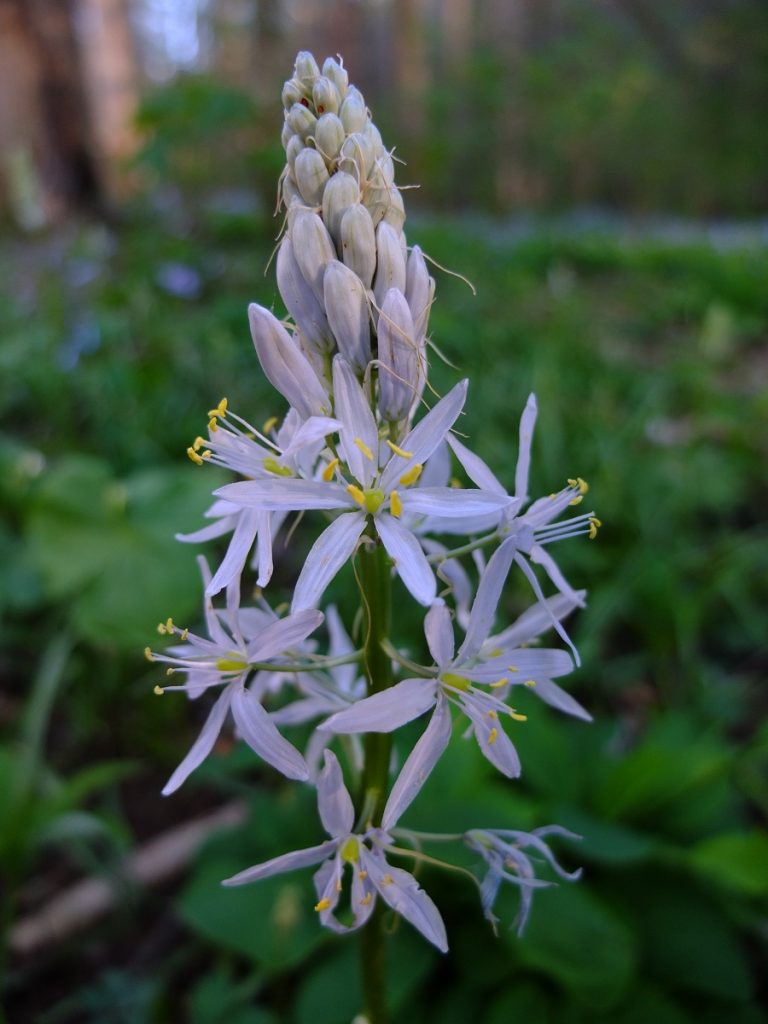
I have a confession to make. I’m in love. The first time I saw her, my heart skipped a beat. There she was, stretching out in the spring-time sun, dressed in baby blues and be-jeweled in yellow. Her delicate scent was carried by the gentle spring breeze. She was so gorgeous and I fell for her right on the spot. Who is she? She’s a plant, Camassia, of course! What an elegant beauty!
The graceful flowers of the camas open up in the early spring, and unfurl like a wave from the bottom of the stalk to the top. The six tepals range from nearly white to the deepest of blues. The perfect flowers of Camassia are hermaphroditic, bearing both male and female reproductive parts (even though I refer to her as a she), and have ovaries that are pale-green, and yellow pollen-producing anthers. The flowering stalk is anywhere from one- to two-and-a-half-feet high (or nearly four feet in the case of C. leichtlinii!).
Aside from being so beautiful, camas also has a long history as an indigenous first food staple. The word camas (kæ-mus) or “quamash” comes to us from the word qém’es in the Niimíipu language of the Nez Perce, referring to the food bulbs of the Camassia plant, which they traded to the starved crew members of Lewis & Clark’s Corps of Discovery upon Idaho’s Weippe prairie in 1805. That was probably the first experience with this plant as a food that white-faced colonials ever had.
There are six species within the genus Camassia, endemic only to the North American continent. Although more famous in the Pacific Northwest, few realize that of our continent’s five edible species, two are endemic to east of the Rocky Mountains. There are six Camassia species total:
- Camassia quamash — Common camas, or small camas. Distributed throughout the Pacific Northwest and the northern Rockies. Blooms April-June.
- Camassia leichtlinii — Greater camas, or large camas. Distributed throughout the Pacific Northwest, California, and the Sierra Nevadas. Blooms April-May.
- Camassia howellii — Howell’s camas. Endemic to western Oregon where it is generally found around serpentine soils. Blooms April-May.
- Camassia cusickii — Cussick’s camas. Because of the high level of saponins in the bulb, this is the only Camassia species considered inedible, however, it may be useful to soap-makers. Distributed throughout the Pacific Northwest, California, and the northern Rockies. Blooms May-June.
- Camassia angusta — Southern wild hyacinth, or prairie camas. Most frequent in the black belt prairies of Texas and into the central mid-West. Bloom is later than C. scilloides, usually June.
- Camassia scilloides — Atlantic camas, or eastern wild hyacinth. Native to rich woodlands and bottomlands from Georgia to Ontario, and from Kansas eastward to Maryland. Blooms April-May.
Camassia are in the asparagus family, Asparagaceae, and are in the agave subfamily, Agavoideae (formerly its own family, the Agavaceae). The most similar genus to Camassia would be Hastingsia (rushlilies), Chlorogalum (soaproots), and Schoenolirion (sunnybells). While Chlorogalum, a southwestern native, has generally been harvested for soap rather than food, at least one species, Chlorogalum purpureum (purple amole) has been harvested for the edibility of its bulbs. Among these four genus, edibility seems to depend on the amount of saponins present (which are foaming, soapy molecules).
I’ll be featuring mostly the eastern camas, Camassia scilloides, as it is the species most available to me in my bioregion of the Appalachian Highlands and Piedmont.
Camassia scilloides may be known by several common names. Atlantic camas or eastern camas both describe its eastern habitat. Wild hyacinth or sometimes woodland hyacinth describes its resemblance to the common ornamental garden bulbs. Sometimes you’ll see Indian wild hyacinth used, which is of course referring to the traditional gathering and preparation of this plant by native peoples. Beargrass is another name for C. scilloides, though this one being a little older in its use and not so popular today. The Beargrass Creek outside Lexington, Kentucky, for example, was named for this plant (Camassia scilloides – Beargrass in the Bluegrass [.PDF]). I’m drawn towards calling this plant woodland camas, even though it does well in full-sun too. Lastly, there’s always simply “camas,” with no further distinctions.
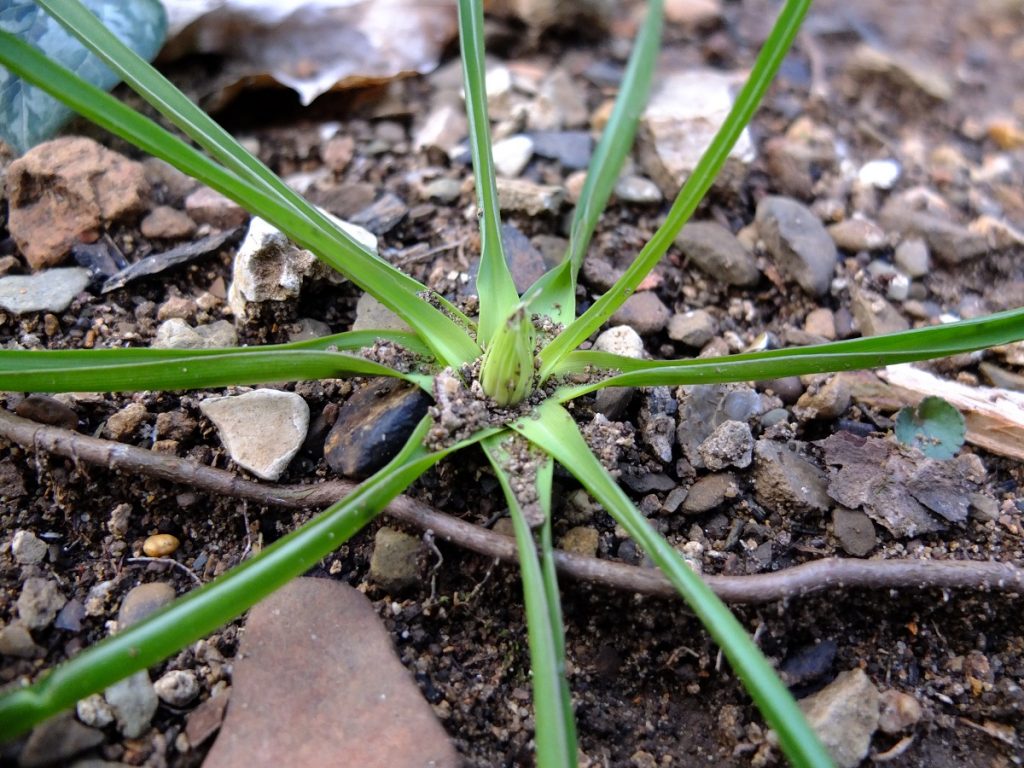
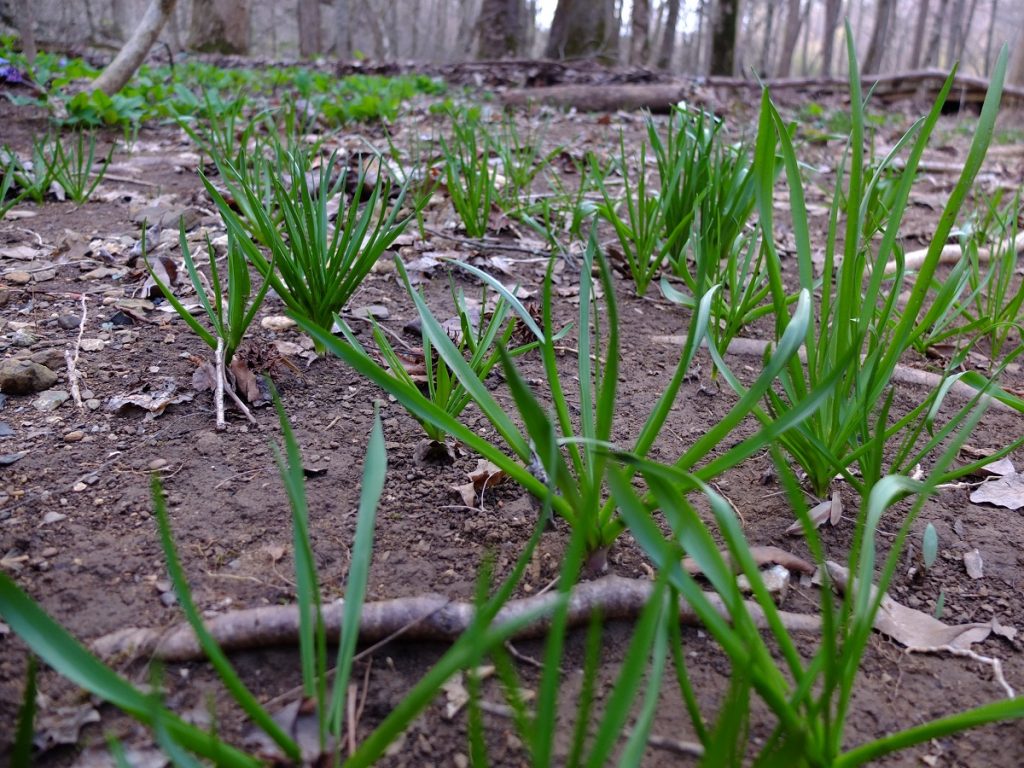
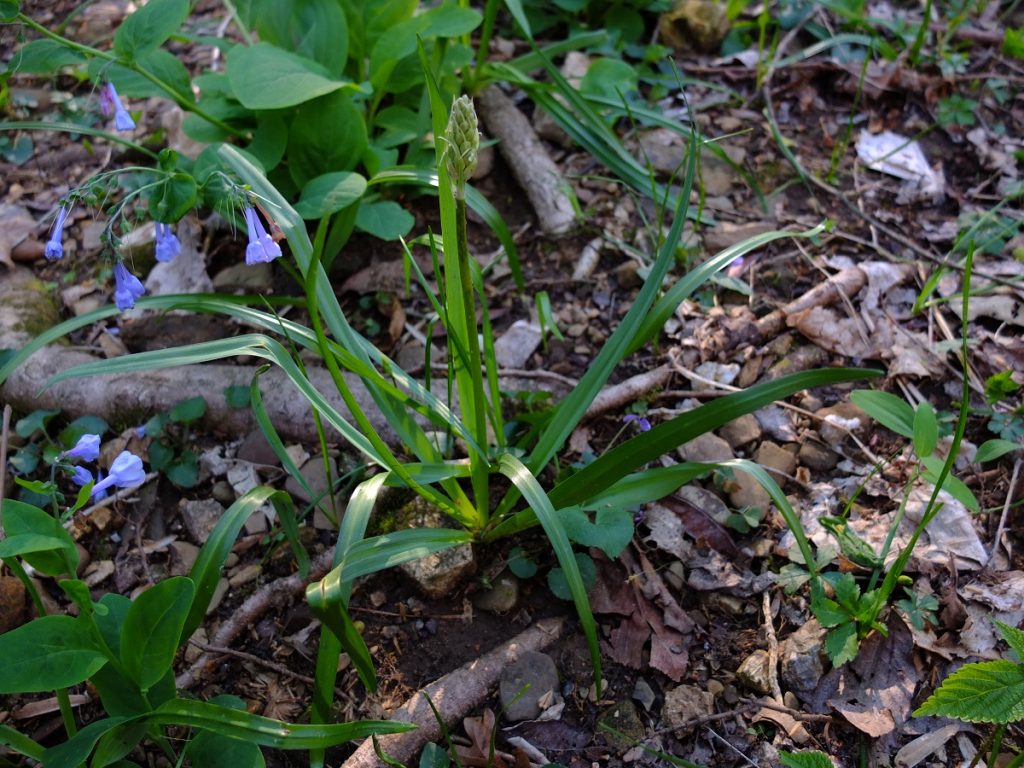
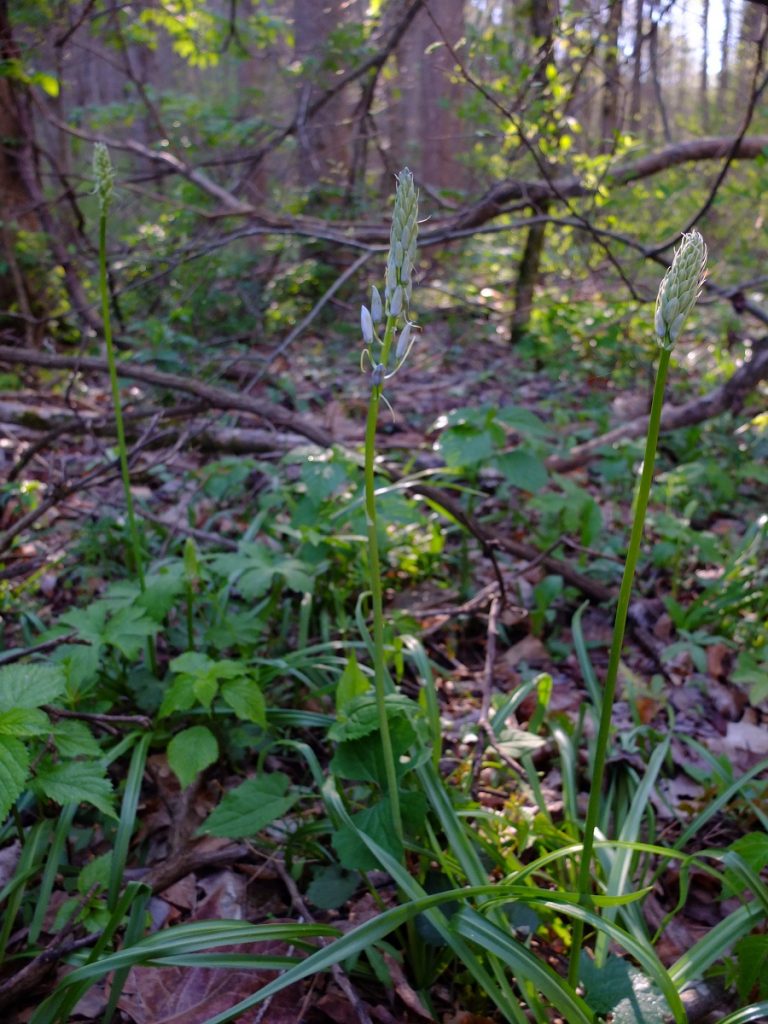
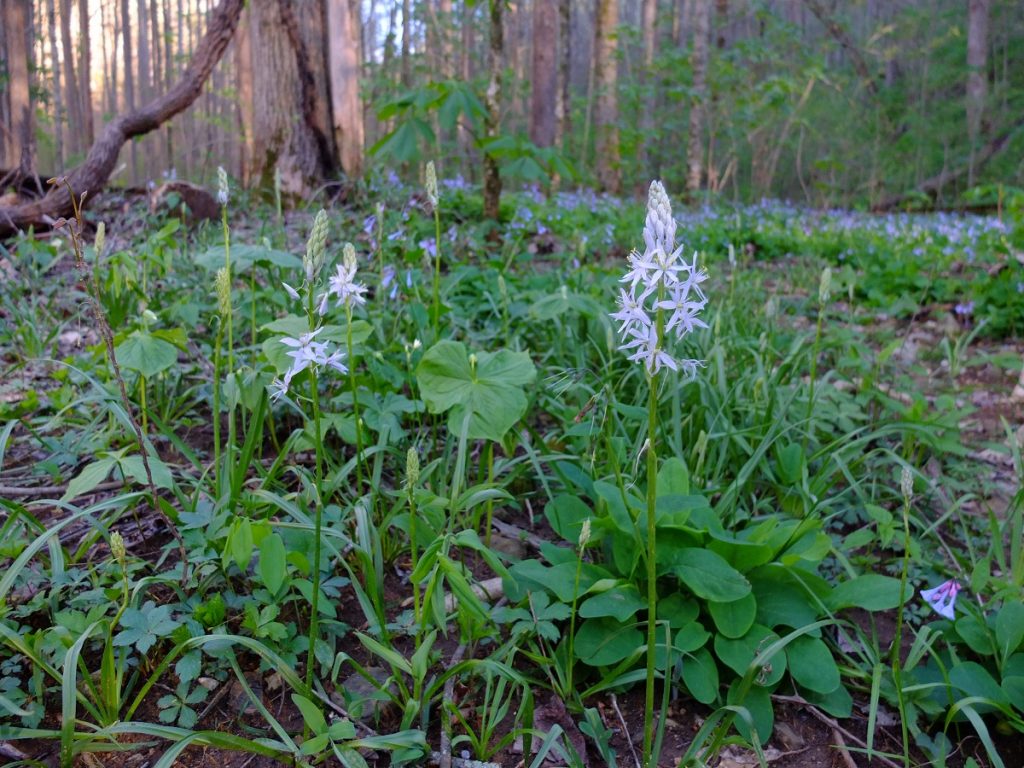
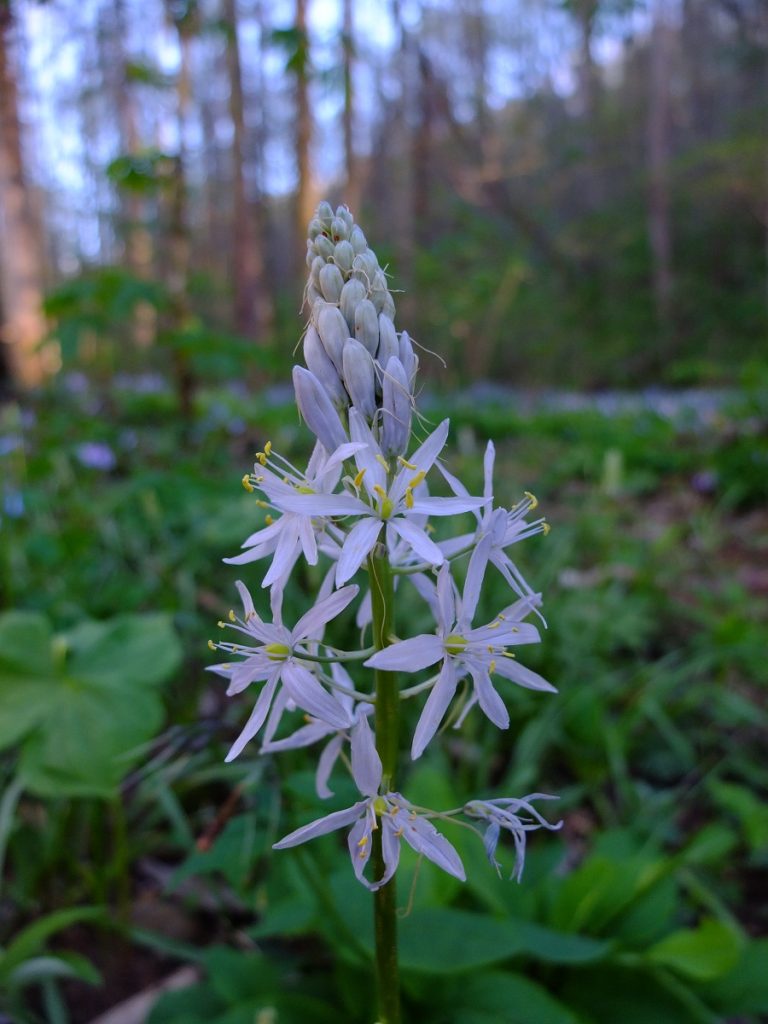
Look for the grass-like leaves of camas emerging in the late-winter in the south or early spring elsewhere. Often false garlic (Nothoscordum bivalve) and the woodland camas grow together in the same patch and habitat, and the early leaves can look very similar to each other sometimes. The camas leaves are broader than the false garlic, curl inwards slightly, have a central vein, and radiate around a central point where the flower’s stalk (or raceme) will later grow up. The bulbs of false garlic (also known as crow poison) are mildly toxic, and to distinguish them from the camas there are a couple of reliable indicators. The first is visual appearance. The bulbs of camas are covered in a dark brown skin, whereas the bulbs of false garlic are white like an onion. When it comes to taste, the raw bulbs of camas taste gummy and have a flavor and texture not unlike squash, but the bulbs of false garlic have a harsh, acrid, or bitter flavor which ought to turn you away. Even if it doesn’t, there’s probably not too much to worry about aside from some discomfort and upset!
From a distance, common grasses may also be mistaken for camas leaves. More time in the field and personal experience will quickly lead one to learn how to discriminate the woodland camas from its look-alikes. Once in flower though, the camas is unmistakable and unforgettable!
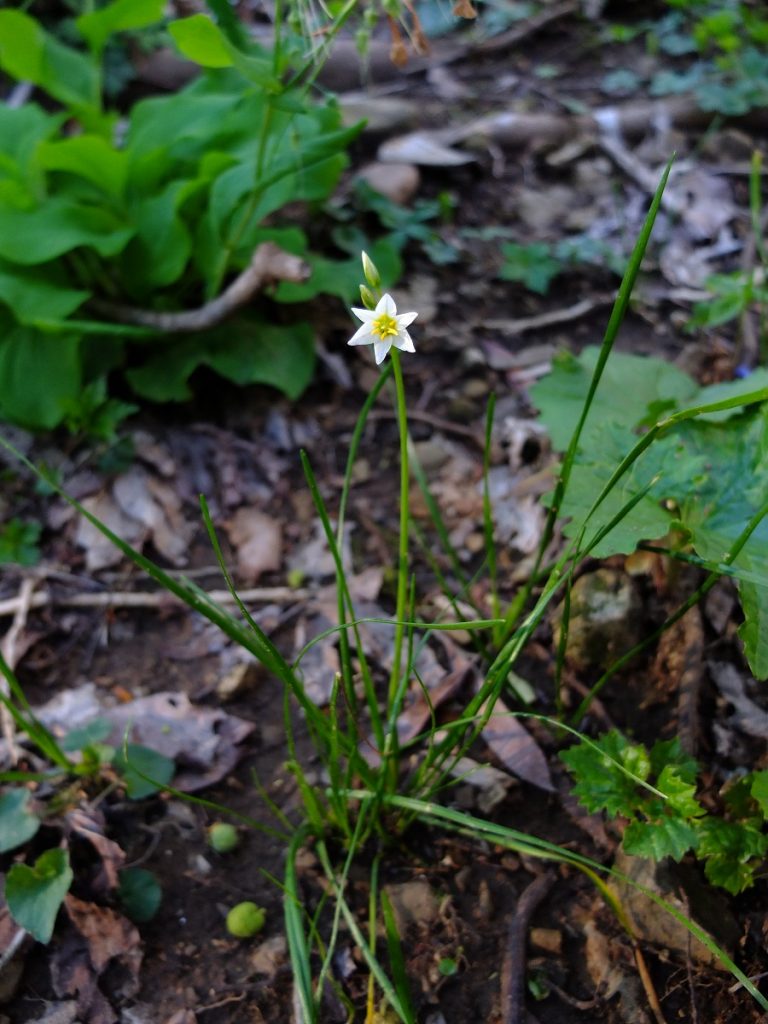
Under favorable conditions, mature plants of the woodland camas can grow good-sized bulbs. It takes at least five years for a newly germinated seedling to grow into a flowering adult, and the camas may go on to live for many more years after that. When the onion-like bulbs reach a certain size or maturity, they begin to divide and vegetatively clone themselves. Our eastern camas, Camassia scilloides, is probably slightly larger than the western small camas, Camassia quamash, although it is notably smaller than the west’s greater camas, Camassia leichtlinii.
Camassia scilloides is hardy and tolerates a wide range of soil pH and conditioning. It’s major requirements are moist soil in the spring and enough sunlight to do its thing. Interestingly, our eastern woodland camas can grow in the shade of a deciduous forest, having adapted to a spring ephemeral niche. By the time the flowers have finished and the seed is ripening, the forest canopy is just closing in. In the wild, I often see the Camassia scilloides growing in limestone-rich areas. I believe this is more coincidental than causal, but the camas bulbs probably do get a real benefit from the calcium-richness of limestone-derived soils. The species is usually found in rich Appalachian coves, moist bottomlands, floodplains along rivers and creeks, and in some prairie remnants.
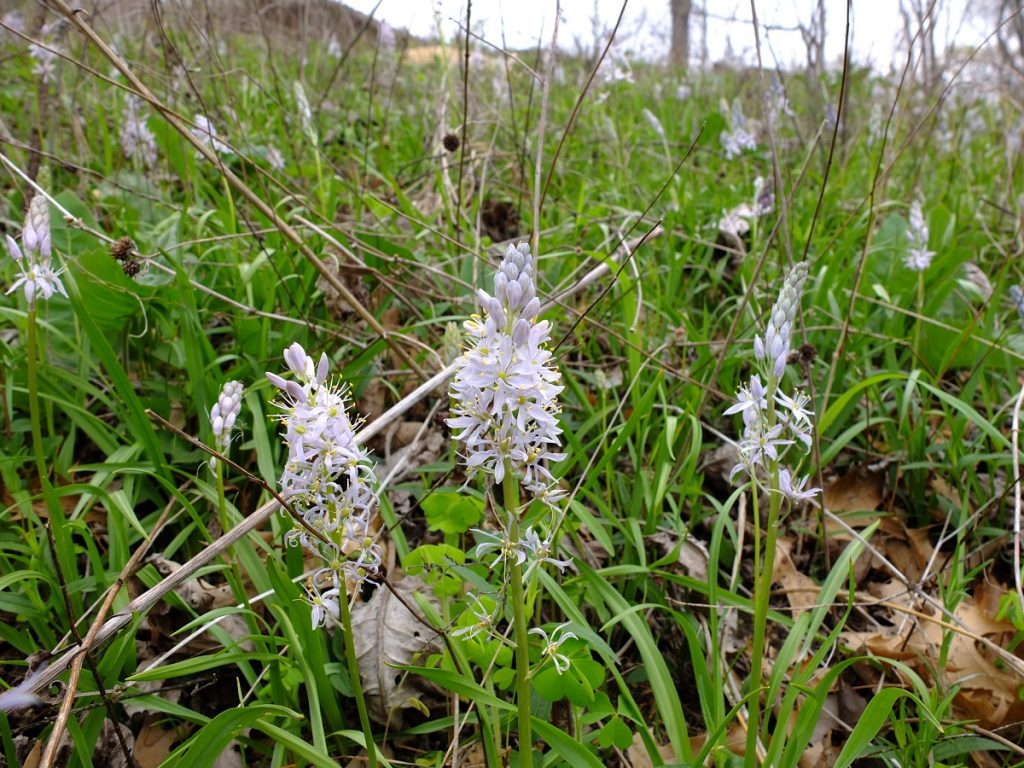
I’ve found it under a diverse canopy of hardwoods and ecosystem types. In some bottomland coves with rich, moist soil, I’ve seen camas growing underneath a canopy of sweetgum, buckeye, ash, maple, basswood, and sycamore. But I’ve also seen it on drier, higher slopes underneath a canopy of poplar, oak, and hickory. The bulbs were smaller in the uplands, but they were growing, and the population was strong and in the thousands. Work with this species and play with it, it may hold even more surprises!
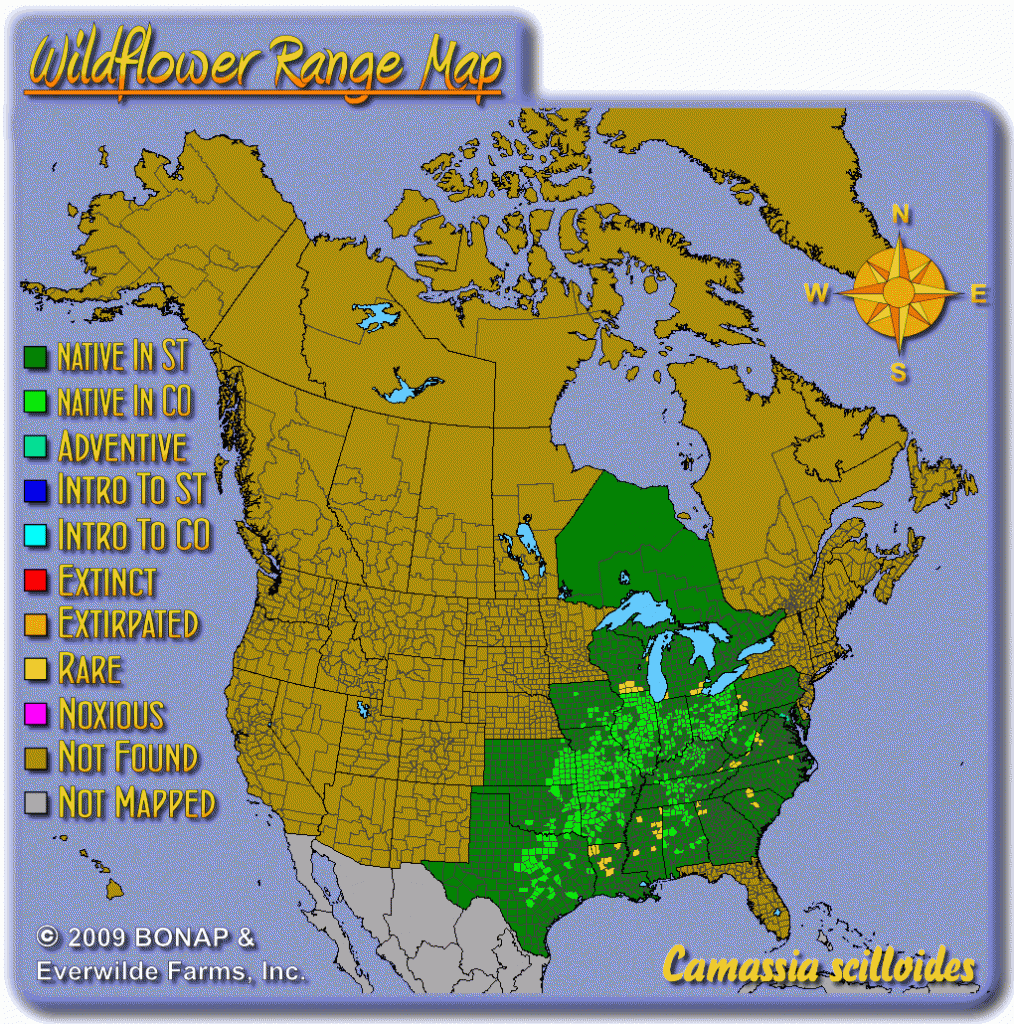
Our eastern woodland camas is generally found on the west side of the Appalachian mountains, although there are a few scattered populations in piedmont South Carolina, North Carolina, and Maryland, and the blue ridge mountains of western Virginia. I imagine this plant may have been far more abundant, especially in the far east, before the pig and the plow. Unfortunately, scant ethnobotanical records in the eastern woodlands leave us to wonder about what the landscape may have even looked like prior to Europeans.
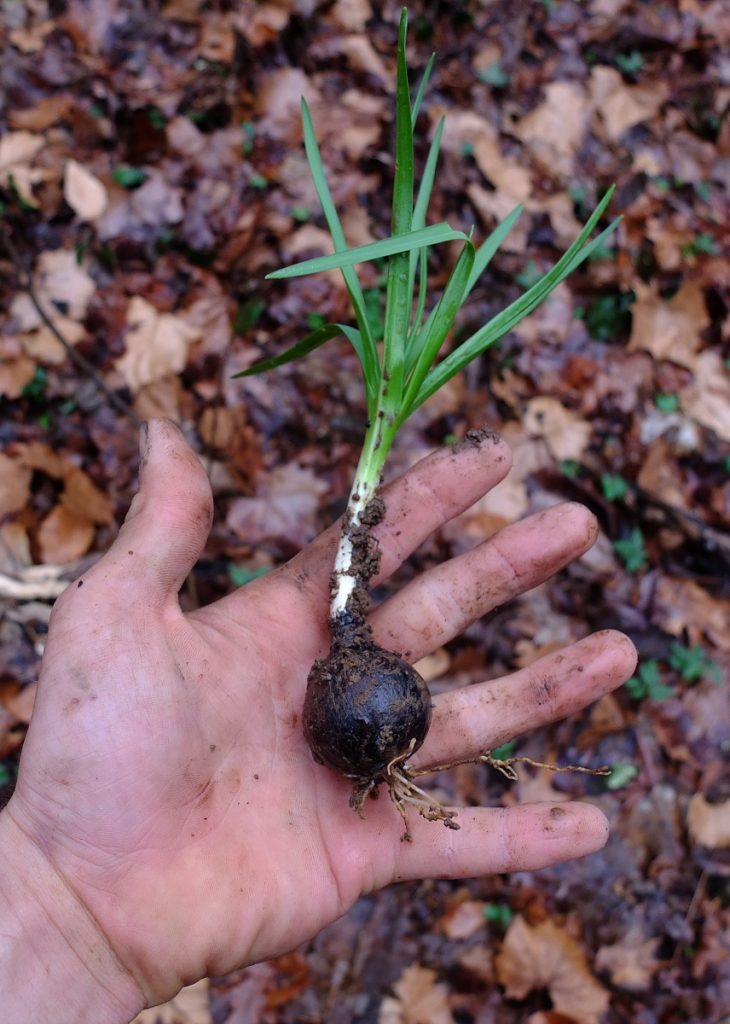
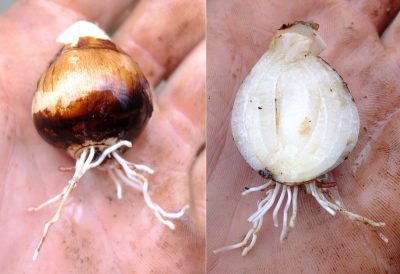
Camas bulbs are rich in inulin, a tough starchy fiber that is normally indigestible to humans. While safe and edible raw — the texture is gummy and the flavor is mild, like squash — they are not recommended. Not only does the indigestible inulin make raw consumption inefficient, but like the similar Jerusalem artichoke, it can result in lots of farting, and if eaten in excess, gastrointestinal upset.
To effectively eat camas, you have to cook the bulbs until they caramelize. With heat, the indigestible inulin is converted into delicious and digestible fructose sugars. However, it can taste a long time to do this. Camas is a true slow food, taking up to 48 hours in a slow-cooker until they turn brown like the wood of walnut.
Traditionally, camas was gathered in the late spring or early summer as the seeds were ripening. At this crucial time, people would dig huge amounts of camas bulbs, enough for a year’s supply. And as they dug each bulb, they would leave behind the smaller bulbs to regenerate the patch, and scatter the seed from the larger bulbs, ensuring future harvests and a healthy population.. After the bulbs were dug, they would be pit-roasted in earth ovens over a period of days until richly brown and caramelized. Once they were fully cooked, the roots would be dried out as an anytime snack, and also for grinding into a flour.
After caramelization, the camas becomes sweet from the sugars. It’s hard to describe the taste, but it’s very good — sweet, firm, and flavorful, almost like if molasses and a vegetable got together and had a baby.
Camas is a high-calorie complex carbohydrate food with some protein and a hint of fat. It is a good source of calcium and magnesium. (https://www.fs.fed.us/) When cooked properly and gathered in abundance, camas is a hearty staple food supplying the baseline of one’s nutritional needs.
The young flower scape is also edible, tasting much like asparagus. It is a succulent and flavorful raw vegetable — delicious — but I wouldn’t recommend trying it unless you find yourself in a large population. While harvesting the stalk won’t kill the plant, it may set it back or prevent it from flowering in that year.
While our eastern woodland camas is still abundant in a few states, it is going to require several years of conscious tending, rewilding, and management to increase any given population to the point where it can be a regenerative food source for individuals, small-families, and groups, and no longer a novelty food.
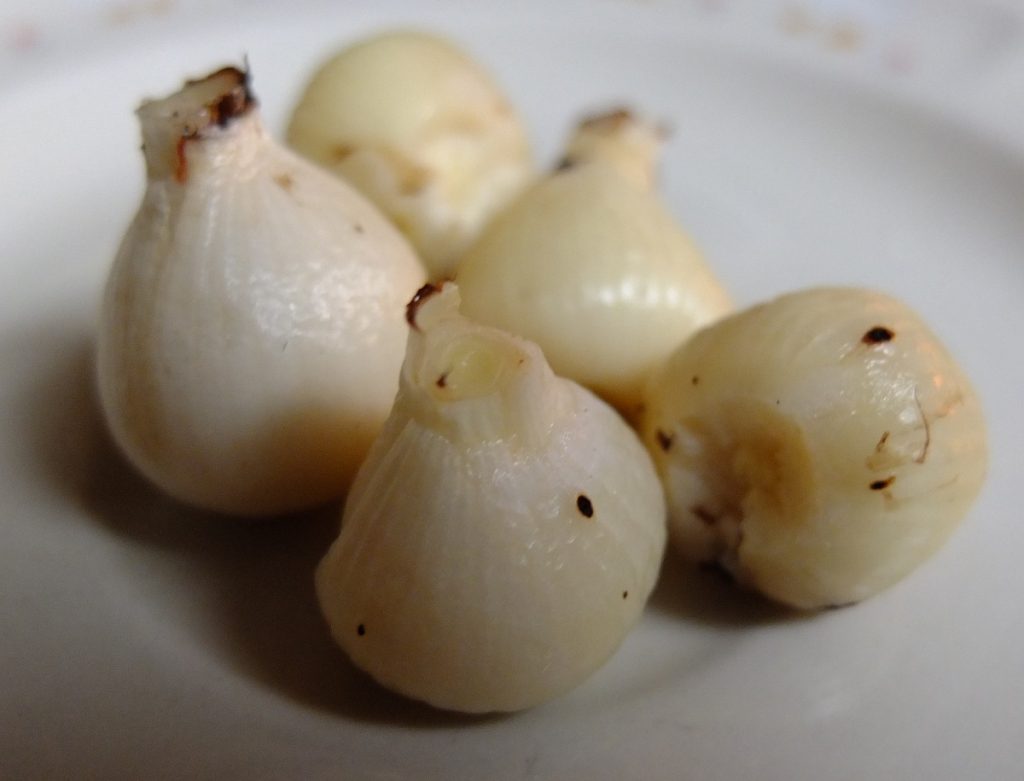
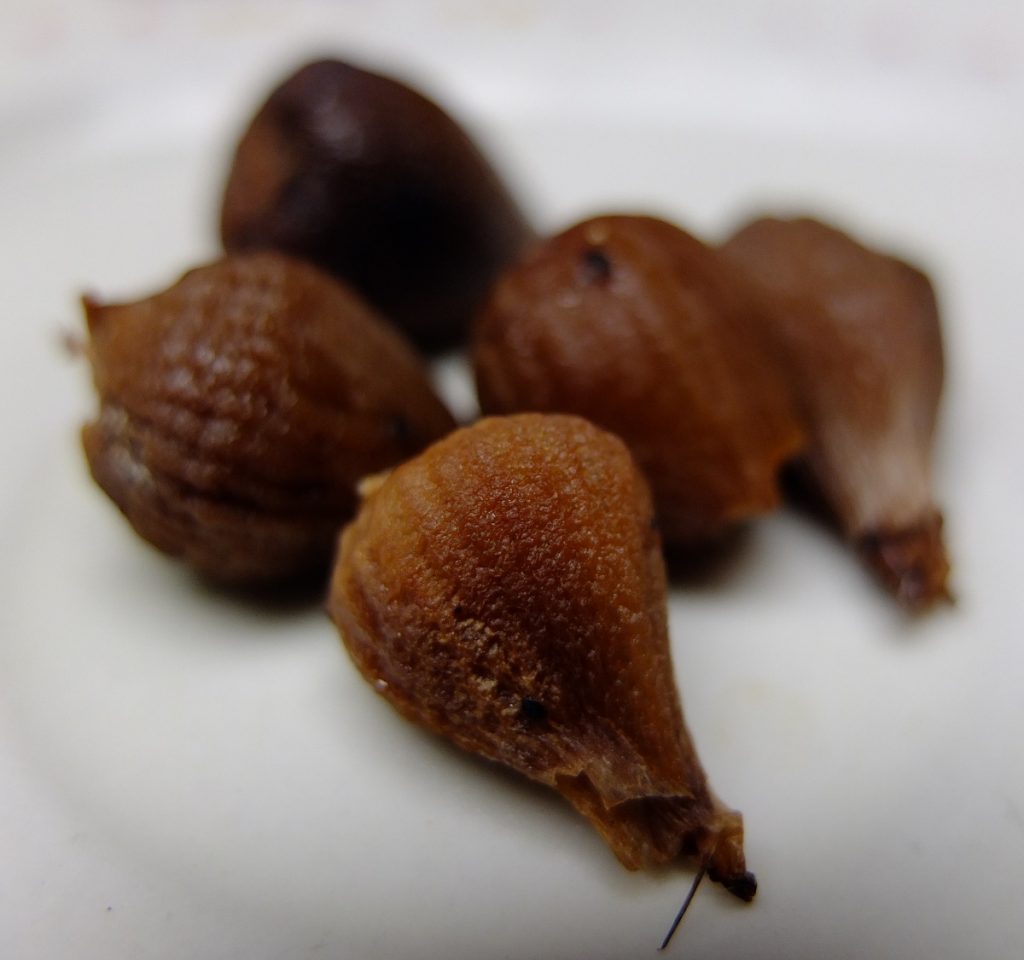
Camassia sets seed abundantly. Gather as the seed pods turn brown and the seeds turn black in the late spring or early summer. The seeds seem to be tolerant of some drying, but it’s best to err on the side of caution and store in cool, moist conditions if not sowing immediately. The seed is double-dormant by some accounts, meaning if sown in the fall it will not emerge the following spring, but the spring of the year after. The seed needs two cold periods, in other words.
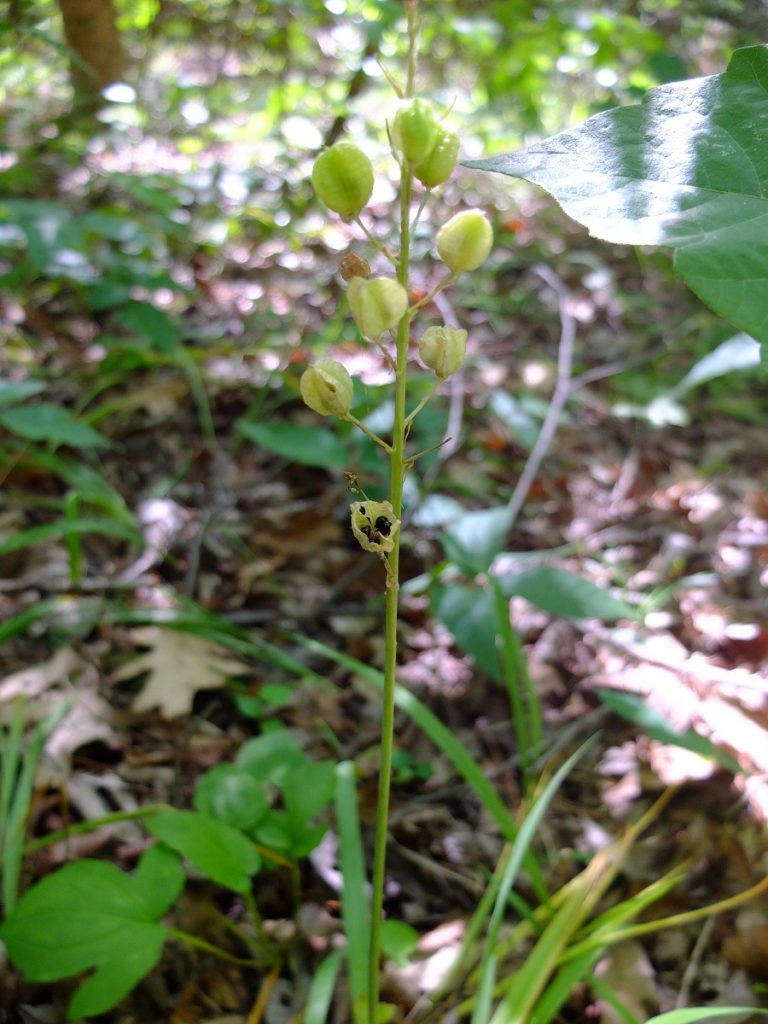
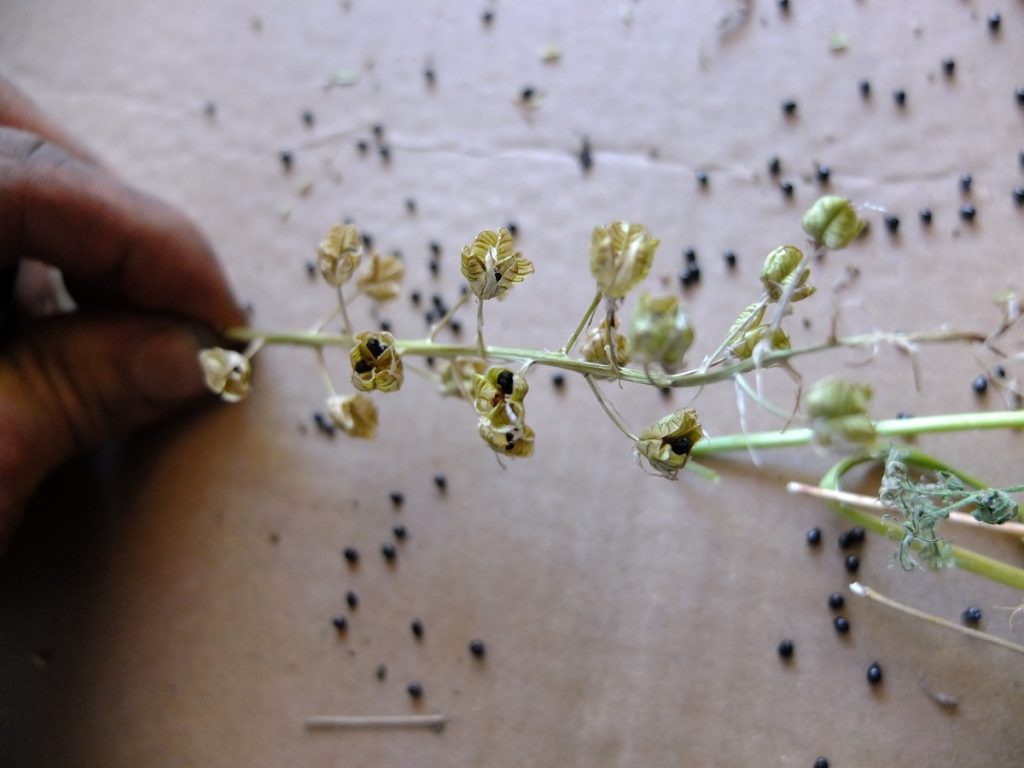
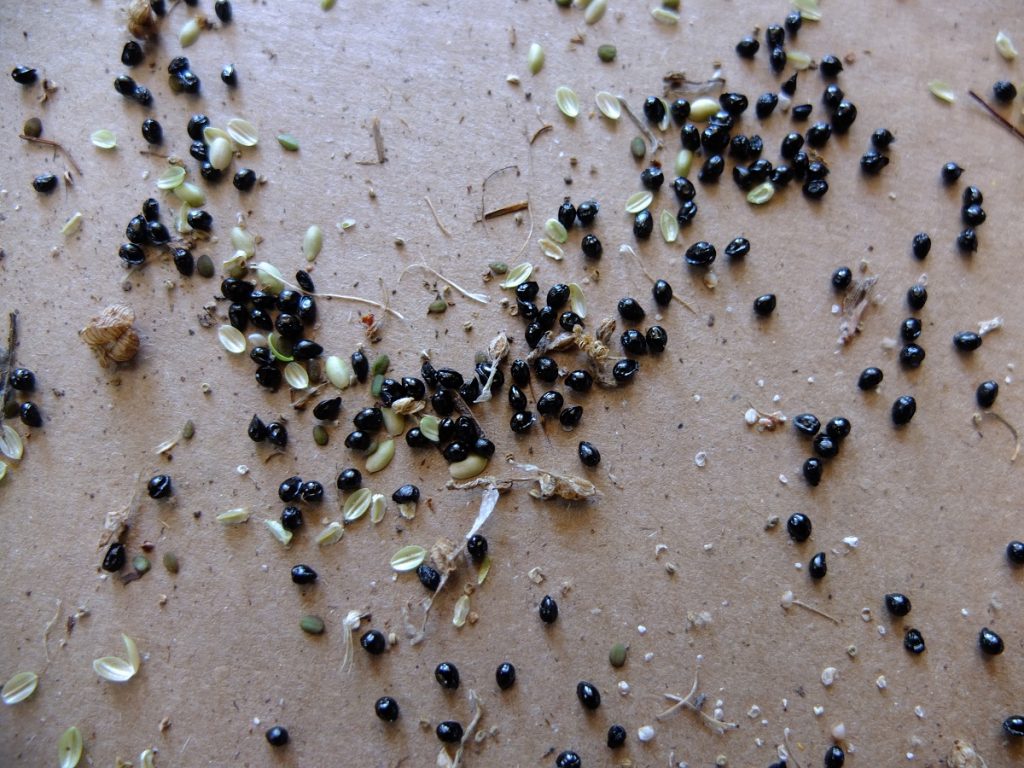
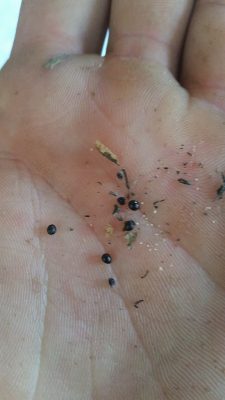
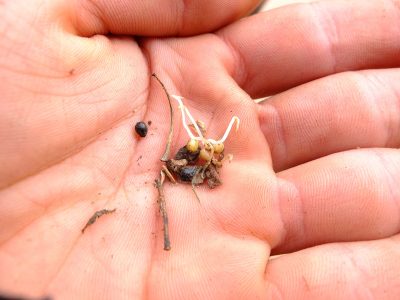
After germination, it may be another five years at least before the first flowers bloom and set seed of their own. Camas is thus a seven-year investment, and worth every moment.
The greater camas (Camassia leichtlinii) of the west has the largest bulbs of any camas species, and I was given some this year to grow out. I’m excited to see how they do, and also find myself wondering about potential breeding projects or improvements. Will C. leichtlinii and C. scilloides cross to make larger-bulbed, woodland-hardy plants? Will C. leichtlinii also take to a spring ephemeral niche, growing under a woodland canopy? I don’t know the answers to these questions, but that’s what makes plant rewilding so much fun. While I could always grow out these C. leichtlinii in a garden setting, I’m far more interested in their potential to grow wild.
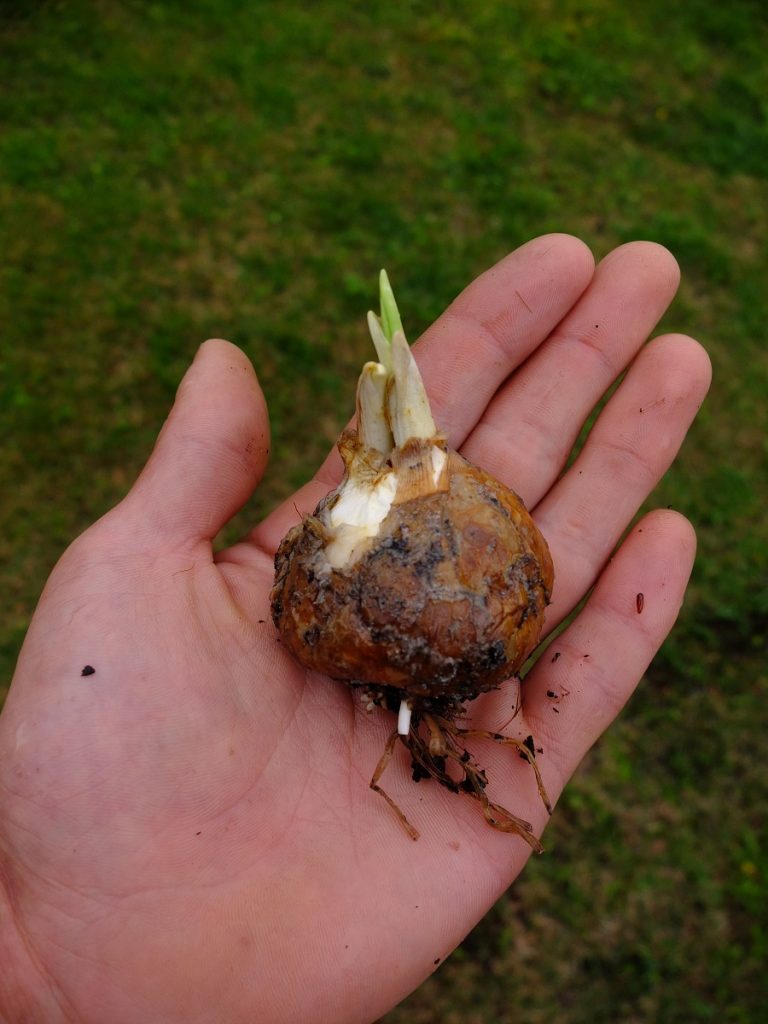
Fingers crossed….your article inspired me to buy a lot of seed of Camassia scilloides to selectively introduce into my forest garden. Thank you so much for a wonderful write-up. I wouldn’t have done this without you.
Botany tech in Montana. Collected seed for Camassia quamash last summer for agency work. Bought bulbs for the 5 non-endangered species last fall. Planted them together. Seem to all be growing so they made it through a Western Montana winter. Pretty excited to see them all bloom.
Thank you so much for sharing your knowledge with everyone!! I found your article while doing research what to do with the seeds of my beloved Camassia leichtlinii ‘herd’, still a very uncommon plant here in southern Germany. After reading, i am most determind and excited to also transform our garden meadow into a Camassia heaven 😉 thank you so much!
Retired gardener, Loved your article. Have been growing some of the more common camassias for years and have several hybrids grown from seed but I would love to know where to get seeds from camassia sciloides,angusta and howellia to add to the mix. If you could help I would be very grateful.
New Yorker transplanted to Provence il y a many moons; known locally for my Jardin des Remparts, a 100-meter-long roadside ribbon of public property where I am destined to end my days, just another roadkill under the wheels of a local yokel on a cellphone, in a hurry. This weekend I discovered, to my delight, a camassia quamash (at least that’s what my printed plant guide + online ones have led me to believe) flowering (towering!) amid a parade of common Muscari comosum, and I, too, promptly fell madly in love with him/it/her. The color is a breathtaking pale periwinkle (my favorite Crayola color), the calligraphic as well as heliotropic curve of the unspiny spinal column elegance incarnate. Is there some way that I can share with y’all you a photo or three? While awaiting your reply, I will translate back into English the fascinating info in my French edition of one Lesley Bremness’s “Eyewitness Guide — Herbs” all about Amérindiens and the guerres tribales that this amazing (delicious as well as gorgeous; Wikipedia informs me that camass is the Nez Percé word for “sweet,” and that its bulbs, boiled, saved Lewis & Clark from starvation) plant provoked. But what is it doing here in Provence? I guess one could ask the same question about me.